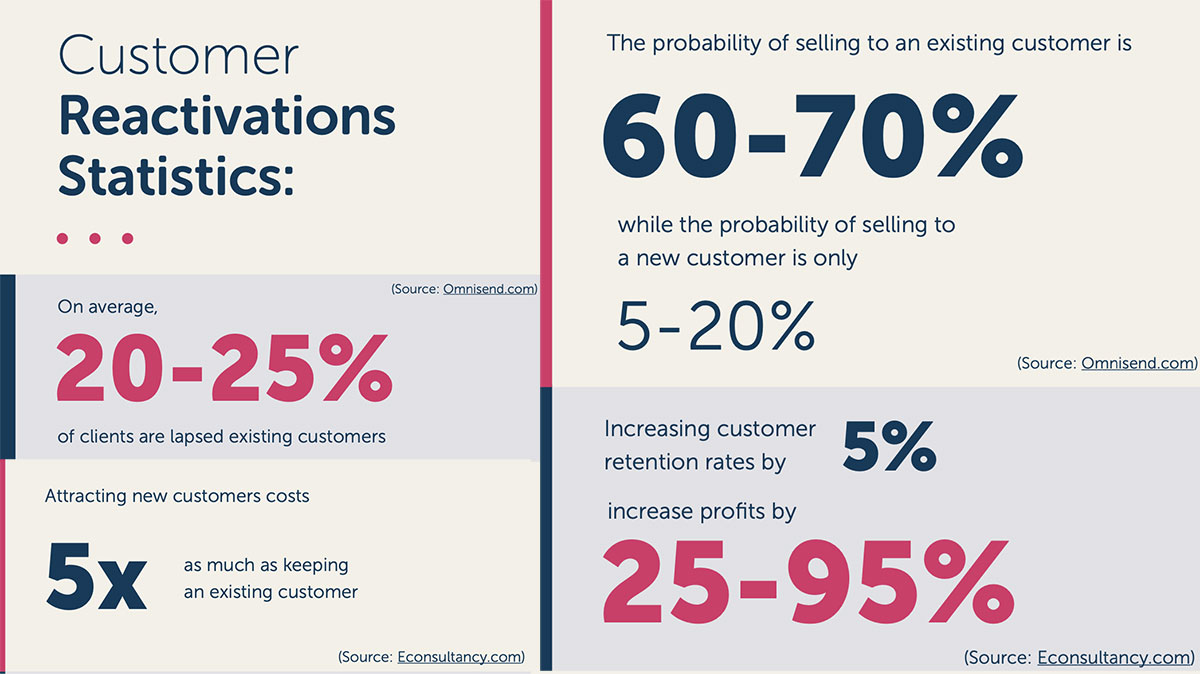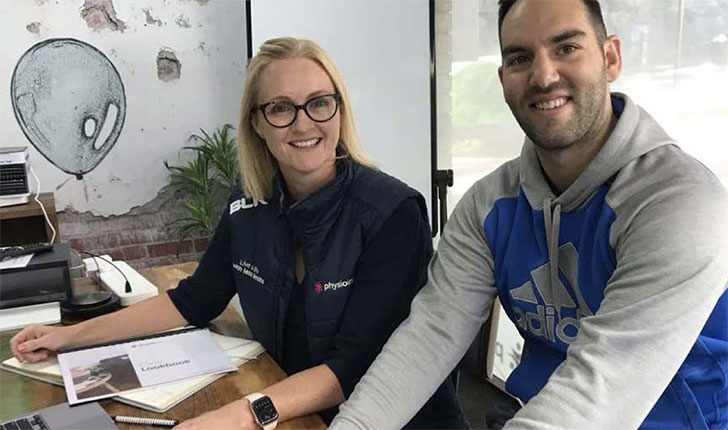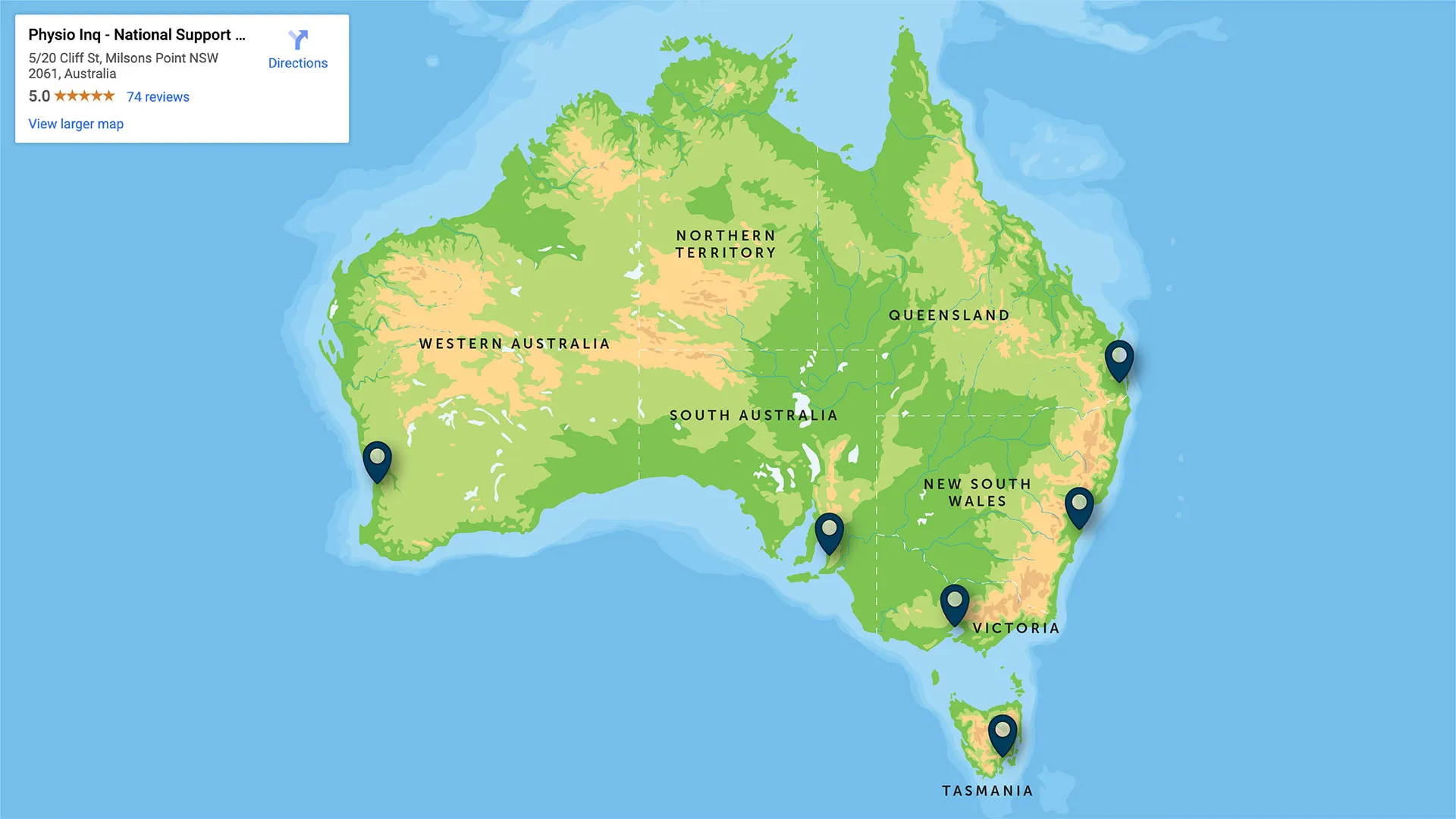10 Ways To Grow Your Business
Originally Published Sep 23, 2021
What you’ll learn in this free guide on boosting your Physiotherapy business
- Your formula to success! How much should you really be spending on each aspect of your business?
- Learn how to make staff your number #1 business asset.
- Train new staff to be effective therapists and your Clinic’s #1 promoters
- There’s a 70% higher change a repeat customer will return to your business... So why aren’t you reactivating them? Learn how to boost profitability with repeat customers.
- Great service + loyal customers = more profits!
- The ‘must-have’ marketing technique that will ensure more patients come through your doors!
- The single most important marketing technique!
- The 10 most important business skills YOU need to master as a Health Clinic owner or Senior Therapist.
There’s a reason why we won Franchise of the Year in 2020
Check Out Our Business Growth Strategies in Action
Click to meet our Franchisees and read their stories

10 Ways to Grow Your Physiotherapy Practice
- Plan & Budget everything!
- Know your fractional expense ratios
- Train your staff to be your number #1 promoters
- Increase your rate of return patients through customer reactivation
- Use email marketing and social media effectively
- Take advantage of business partnerships
- Learn what community marketing is and how to leverage it
- Have the skills all successful business owners had – and lead from the front
- Identify your & your staffs’ transferable skills (& know how to use them)
- Understand why your competitors fail (and how to avoid it)
Check out some of the chapters below we have decided to feature below from our “10 Strategies to Boost Your Healthcare Business” book
Click to download your FREE E-book
10 Strategies to Boost Your Healthcare Business
Strategy 4:
Your guide to reactivating existing customers: Increase the rate of return customers
(and boost profits)
You know how important customers are. But this fact is especially true when it comes to small businesses.
You’ve spent your hard-earned money and time advertising to these groups of people, they’ve come through your business doors, you’ve provided excellent customer service and they’ve purchased your items or services.

But what happens once they leave your business’ premises or website? How do you encourage one-time customers to become repeat and loyal customers? And where do customer reactivation campaigns fit in?
All we know is that more often than not, small businesses can’t afford to lose any of the customers you’ve worked so hard to gain.
In this section, we will explore the need to employ customer reactivation campaigns, the benefits and the methods to do so.
How does Customer Re-Engagement theory work?
Picture this; you’ve opened your store or website and you’re spending money on getting customers to buy your product or service. That’s great! One of the main goals of marketing is to reach as many people as you can and get the message of your business out to the world. But, if some of that effort isn’t focused on retaining customers that are already somewhere in the funnel, you’re missing out on a huge opportunity.
If you’re familiar with your sales funnel, you’ll understand that when it comes to spending money targeting potential customers, a lot of money and awareness must happen before a sale is made. If you were only focusing on finding new customers, you’ll end up spending a lot of advertising dollars for each sale in the long term.
On the flip side, when making a purchase, customers subconsciously engage in what’s called a Consideration Process. This process involves being aware of the brand, considering the product or service you are offering and finally making a decision. This process can be quick when dealing with products/services of low cost (such as buying a candy bar) or can take months when the cost is high (such as buying a new car or a house). Customer re-engagement methods aim to target the stage in the consideration process called the ‘Post Decision Stage’, where a customer assesses if the cost of your product/services was worth it.
For example, if you ordered an expensive meal at a restaurant, you may choose to evaluate the worthiness of the spend based on the quality of the meal.
This is where re-engagement comes in. Re-engaging customers is the practice of using your existing customer database and launching campaigns to encourage repeat purchases and long-term customer loyalty.
In many ways, re-activating customers is easier than finding new ones. Existing customers already have an emotional attachment to your brand. Unless you make a huge blunder during the transaction, they’re likely to feel good about their choice to purchase your product/service again. People like to be consistent.
For example, when we choose to buy from a certain brand, we assume we did enough research and made a good decision. We want to stay consistent with that original choice, otherwise, we risk admitting we made a mistake (which humans don’t often like to do). So, re-engaging current customers taps into that bias, reminding them that they did make a good choice when engaging with your brand in the first place.
But before we get into how you can reactivate existing customers, let’s talk about the numbers.
How can I increase profits by re-engaging existing customers?
The truth is, retaining customers costs less than gaining new ones. Almost five times less, in fact. So, from a simple financial standpoint, it’s a good idea to work on reactivating current customers.

However, looking a little deeper, if you focus on retaining customers, it’s likely that you’re in business for the right reasons. Instead of making customers feel like a prize to be won or nothing more than a number in your CRM system, spending time re-engaging your existing customers will only strengthen the bond between you and them.
In a way, it’s part of the reason why we start a small business in the first place -- to help people, solve a problem, and connect with others. Re-activating our current customers instead of making a sale and forgetting all about them is the core of small businesses.
People want to feel like they’re part of something bigger than them and knowing they’re an important piece of your business strategy is essential.
In short, customers just want to feel appreciated by the businesses they support. Tapping into this emotional connection and strengthening the interpersonal bonds you share means you can re-activate customers and create lasting relationships. It’s a win-win for everyone.

How Can Businesses Re-Engage Existing Customers?
Now that you understand the importance of not only finding new customers to add to your sales funnel but also re-activating the ones you already have; you’ll likely want to reassess right away.
So, where to start? The goal with re-engaging existing customers is to increase the amount of times your business and an existing customer communicate each other.
Here are a few simple ways to re-engage existing customers.
1. Reach out on their birthday
2. Request customer feedback
3. Ask for friend recommendations
4. Share their content on Social Media
5. Use Email Marketing
Strategy 5:
How Healthcare businesses can take advantage of Business Partnerships
What is a business partnership?
A business partnership is one of the best marketing strategies for small business owners since it allows you to capitalise on another brand’s audience in a cross-promotional capacity.
We get it. If you’re a small business, your advertising budget probably isn’t much. So, one way around that while continuing to increase your audience base is to go into a business partnership where you agree to various exchanges.
For example, you might partner with a neighbouring business to run a co-hosted event in your suburb. Or you might sponsor a local soccer team. You could simply offer to leave your business partner’s brochures in your lobby if they agree to do the same.
Social media is another great way to exchange digital advertising. For example, you might enter a digital partnership where once a month, you agree to post about your partner’s brand and, in exchange, they’ll do the same.
By taking advantage of cross-promotional opportunities, you’re not only able to trade what’s normally expensive marketing and advertising space, but you’re also engaging with your community in a way that’s mutually beneficial. Basically, it’s a win-win for everyone!
So, how can you get started? Below, we’re exploring how to market and advertise a small business through cross-promotional business partnerships.

Put It on the Calendar
When it comes to getting things done, one of the best ways to make sure it actually happens is by putting it on the calendar. Make it part of your regular schedule to target one or two businesses every month and reach out to them about a potential partnership.
This calendar approach doesn’t have to be arbitrary either. Think about what time of year would be best to reach out to each of your partnership options.
For example, for physiotherapy businesses looking for partnerships, you might go for gym partnerships in January in the heat of New Years’ resolution season and collaborate with GPs in February after the school holidays end and their offices reopen.
Putting your business partnership outreach program on the calendar then not only keeps you on schedule but it can also help give you ideas based on the time of year.

Make a List of Potential Partners
Chances are, when you reach out to potential partners, some will say yes and some will say
no. That’s why you need to create a long list of businesses to pitch to.
In our case as a physiotherapy business, we like to partner with other healthcare businesses like doctors, gyms, massage therapy clinics, and sports clubs. However, if you’re a hairdresser, you might reach out to nail salons or beauty product manufacturers about a partnership.
Get creative and think about your clients or customers. What other services do they often require in addition to yours that someone else might be able to better provide? It could even be as simple as partnering with the coffee shop next door.
The idea is to think of a mutually beneficial partnership that can help with not only your
small business marketing but with their marketing endeavours as well.
Create a Process for Reaching Out
Once you’ve got a list of potential partnerships ready to go, you’ll want to create a process for reaching out to everyone. Write out a general pitch, leaving space to personalise the message once it’s ready. Just make sure all the most important information is there.
Figure out what you can offer and why they should want to partner with you. Make sure you make a clear outline of what a cross-promotional partnership looks like for you and give them examples of what they might be able to offer in return.
When you have these systems in place, you’ll have less excuses when it comes time to organise your next round of pitches and helps you keep everything organised.
Prepare Marketing Collateral
Now that you’ve sent out your proposals and hopefully received some interest, it’s time to
prepare your marketing collateral. Basically, you’ll need to figure out what you promised to your new business partner and how you can best deliver on those promises.
You might have to prepare a media kit to send to your new partner including your logo and relevant copy that they can use in cross-promotional materials, making sure that your brand is well represented.

Get Creative
As with all digital marketing for small business endeavours, it’s so important to get creative with your approach. The sky is the limit in terms of what you can do to cross-promote your business partnerships.
Start by getting creative with who you’d like to partner with in the first place. If you’re a health business, of course, go for the obvious candidates. But also feel free to take risks and reach out to less obvious contenders.
Of course, you want your partnerships to be relevant and you want to actually have something to offer your partners. But, you can get really creative with who you reach out to.
Additionally, thinking outside the box in how you cross-promote each others’ businesses is a fun and rewarding part of the process.
Maybe you’ll put on an event that shows the fun side of your brand outside of being an expert health practitioner. Or, you’ll take everything virtual and see how that goes.
Overall, be sure to really consider your partner’s business and form a truly collaborative approach.
With these simple steps, you can take your health business to the next level through strategic partnerships that are collaborative and mutually beneficial.
Partnerships not only help you advertise your small business on a budget, but they help you interact with your community. Plus, you’re able to offer your clients and customers a wide variety of products and services without having to do it all yourself. Simply refer them to your partners!
However you go about creating business partnership, the choice is yours. But, by simply getting started, you can grow your business in a community-centred way that’s beneficial for everyone. So, get those pitches ready and snag your first business partnership today!
Where from here if I need more help and guidance on making that big decision of business ownership?
First and foremost, we would encourage you download our FREE downloadable book “10 Strategies to Boost Your Health Business in 2021” to get you up to speed on what lies ahead in physiotherapy business ownership in 2021 and the lessons we have learnt and continue to learn over the last 15 years.
Alternatively you can email our Physio Inq Development team on franchsing@physioinq.com.au and one of our team members will answer any of your questions, both business, finance and life related. You will likely be given a questionnaire about where you are now, where you want to be and what skills and strengths you have to accomplish your goals.
It is important to talk to friends and family about your decision. Not to get approval, but to let them understand why you are doing what you are doing and how integrate your new life with the ones you love. You will be amazed at how much a supportive network drive your results.
Good luck, enjoy the process and stay true to yourself.
Disclaimer
The information provided on this blog is intended for educational and informational purposes only. It is not intended to be a substitute for professional advice or treatment. Always seek the advice of a qualified professional with any questions you may have regarding a medical condition. Never disregard professional medical advice or delay in seeking it because of something you have read on this blog.


